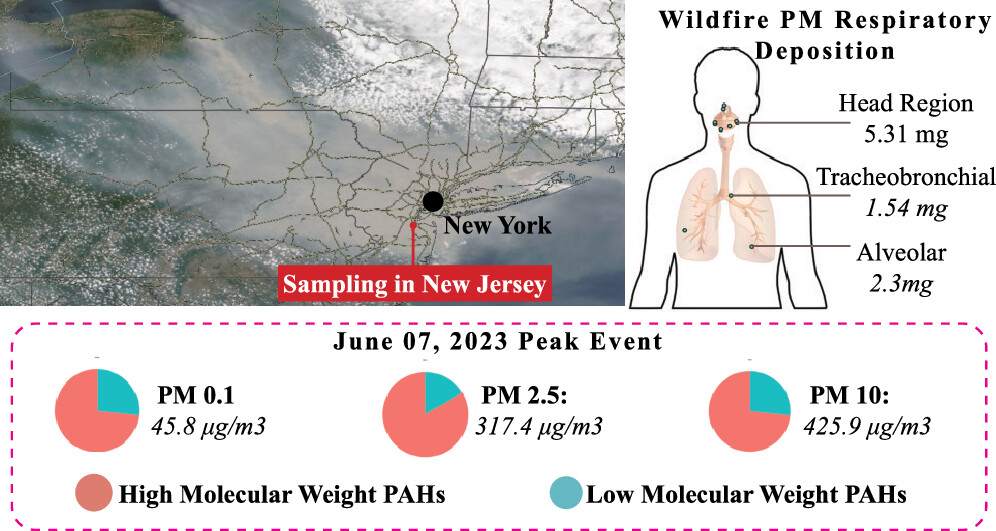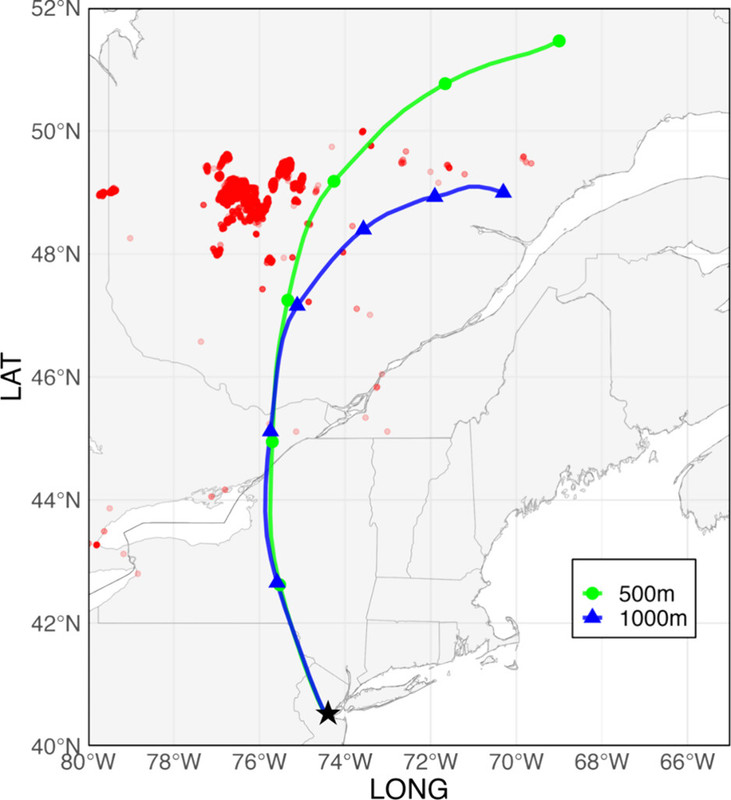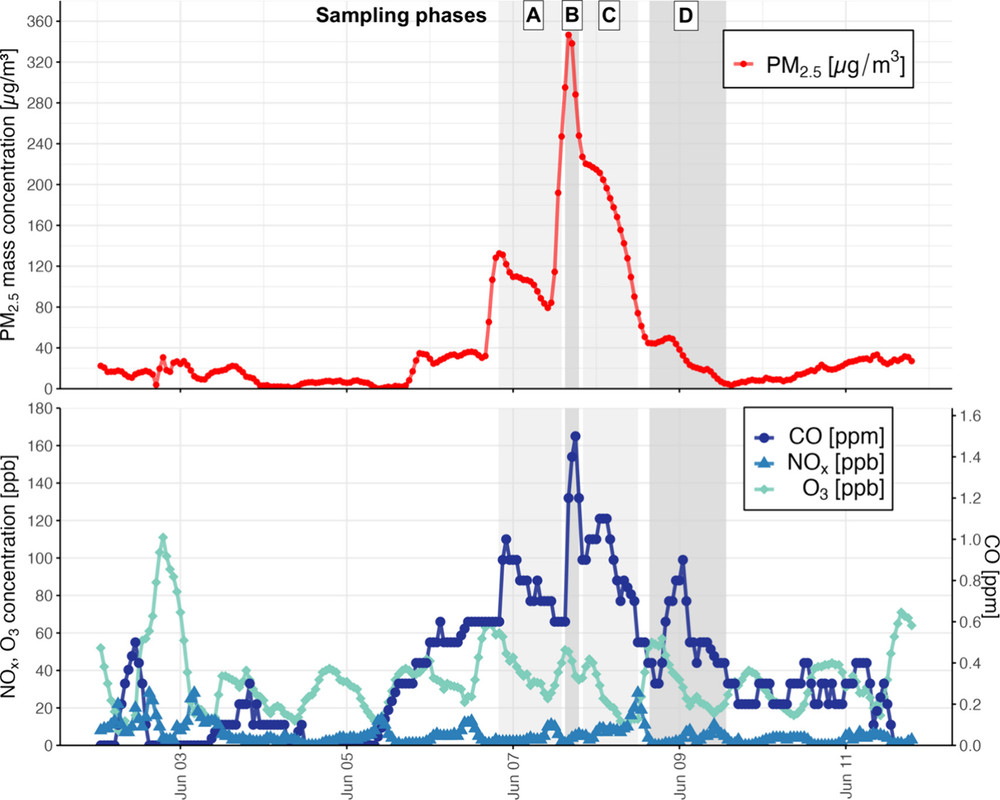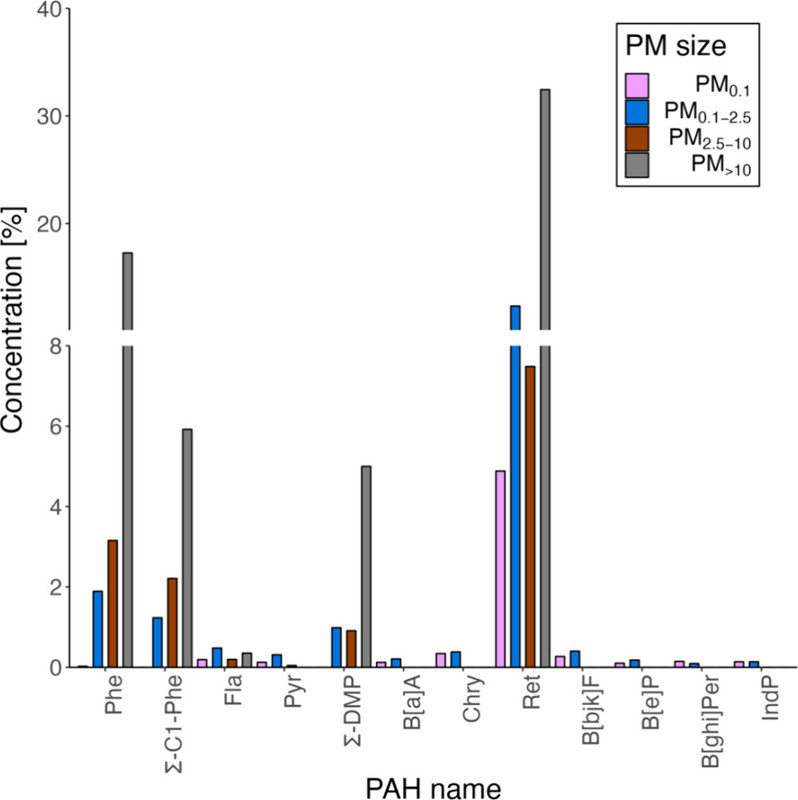Science
Related: About this forumThe Canadian Summer Forest Fires and Toxic Particulate Pollution in NY/NJ
The paper I'll discuss in this post is this one: Physicochemical Characterization of the Particulate Matter in New Jersey/New York City Area, Resulting from the Canadian Quebec Wildfires in June 2023 José Guillermo Cedeño Laurent, Hooman Parhizkar, Leonardo Calderon, Denisa Lizonova, Irini Tsiodra, Nikolaos Mihalopoulos, Ilias Kavouras, Mahbub Alam, Mohammed Baalousha, Lila Bazina, Georgios A. Kelesidis, and Philip Demokritou Environmental Science & Technology 2024 58 (33), 14753-14763.
I was flying into NJ from a business trip during the haze event from the Canadian fires that blanketed the Northeast when the pilot came on to announce that despite the smell in the cabin, the plane was not on fire; it was smoke from vast burning fires.
Often, when I am confronted about my advocacy of nuclear energy with balderdash about Fukushima, Chernobyl, (even TMI) blah, blah, blah, I am inclined to ask how these much hyped disasters, often discussed on servers and home computers powered by electricity generated using dangerous fossil fuels which kill during normal use (roughly 19,000 people per day), compare to the planet being in flames. Sometimes, albeit rarely, the point gets through.
Um, wildfire smoke, the ongoing result of extreme global heating driven by dangerous fossil fuel waste, isn't good for you. On the contrary, it's bad for you. Particulate matter in biomass smoke, and many of the associated chemicals are powerful carcinogens. The ratio of cancers caused by smoke to that caused by radiation leaks over the 70 years of commercial nuclear power is a big number.
I won't have much time to discuss this paper in detail, but I'll just excerpt a few bits and offer up some of the graphics.
From the introduction:
In the US, over 60,000 wildfires burn an average of 2.8 million hectares of land every year. (4) Due to climate change-driven drought, extreme heat, and reduced snowpack, recent wildfire season lengths are expanding dramatically. (5) In 2020, over 28 million people, approximately 70% of the population in California (CA) experienced more than 100 days of unhealthy air quality as specified by the US Environmental Protection Agency Air Quality Index values above 100 from elevated ambient particulate matter with an aerodynamic diameter of less than 2.5 ?m (PM2.5) and ozone. (6) During the 2020 wildfires in CA, daily PM2.5 levels often reached 350–500 ug/m3, significantly higher than the 24 h average limit of 35 ug/m3, which is specified by the National Ambient Air Quality Standards (NAAQS). (7)
The impacts of wildfires, however, are not limited to the US. Worldwide, 2.2 billion people were exposed to ?1 day of substantial wildfire pollution per year in 2010–2019, with the average person having almost 10 days of exposure per year. (8) The same analysis determined that, globally from 2000 to 2019, the population weighted average WFPM2.5exposure was 2.5 ug/m3. It is significant to mention that, since WFPM is dominated by nanoscale PM, which has less mass compared to micron-scale particulates, a 2.5 ug/m3 add on is translated to millions of particles per volume of air with different and unique chemical composition. Therefore, relying on PM mass concentrations may underestimate the associations between WFPM and health outcomes given the nanoscale nature of such particles. Furthermore, wildfire air pollution poses a significant health threat, particularly to socially vulnerable Americans living in environmental justice communities already burdened with compromised air quality. Davies et al., 2018, identified 29 million Americans at risk for extreme wildfires, of which 12 million belonging to Black, Hispanic, or Native American communities face approximately 50% greater vulnerability to wildfires compared to other census tracts. (9)...
("u" has been substituted for the greek letter "mu" which is no longer accessible at DU.)
The sampling was done at the Rutgers campus, a relatively short drive from where I live.
Some graphics from the paper:
The satellite image of the smoke in this case (available at the abstract to the paper) :


The caption:

The caption:

The caption:

The caption:

The caption:
The paper concludes with some wishful thinking, the idea of regulating the effects of air pollution driven by extreme global heating:
I'm not all that interesting as a person, but if I were, if one really wishes to know why I consider opposition to nuclear energy as insane as Trump trying to talk about the cost of childcare, which one DUer eloquently characterized as being like a junior high school kid giving a verbal book report on a book he hadn't read, thinking about the consequences of extreme global heating, which I do all the time, might help.
We are, collectively, not "reading the book" but here's a report.
Have a wonderful weekend.
applegrove
(123,130 posts)in the mountains that fills rivers across north America. They are going to melt two months earlier so we will have to build dams to hold it back for agriculture. Also drought will result. That means more fires.
What have we done. What have we done.